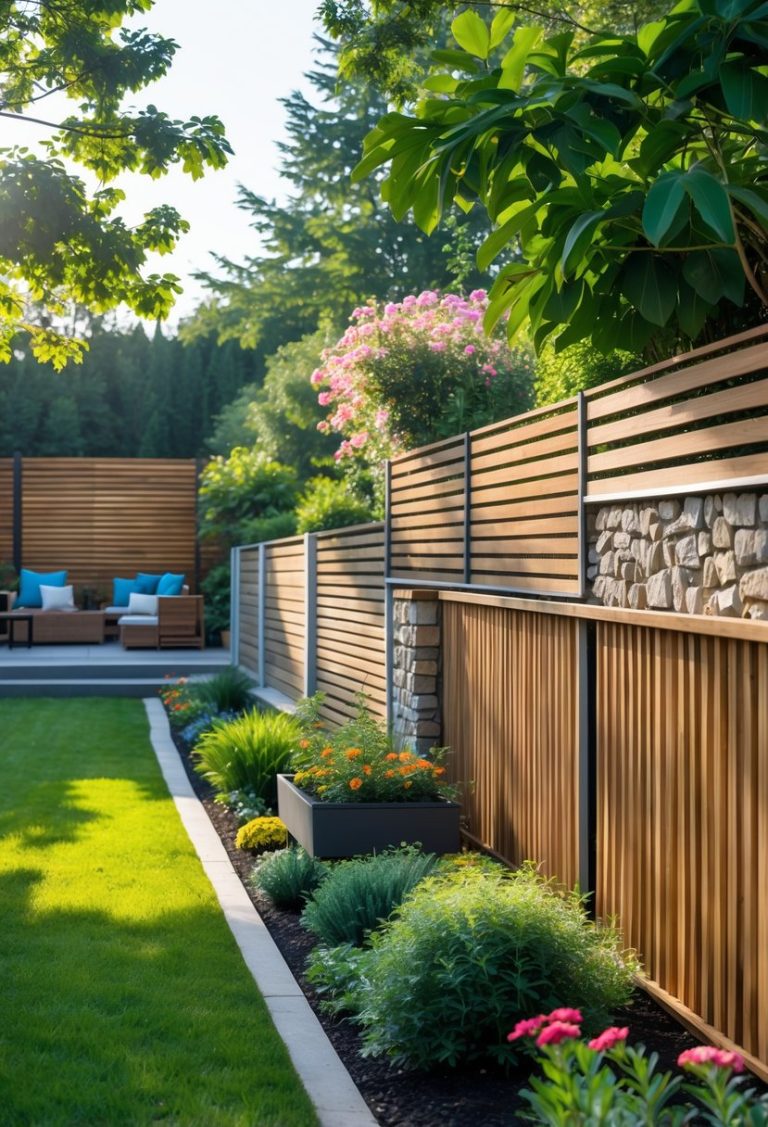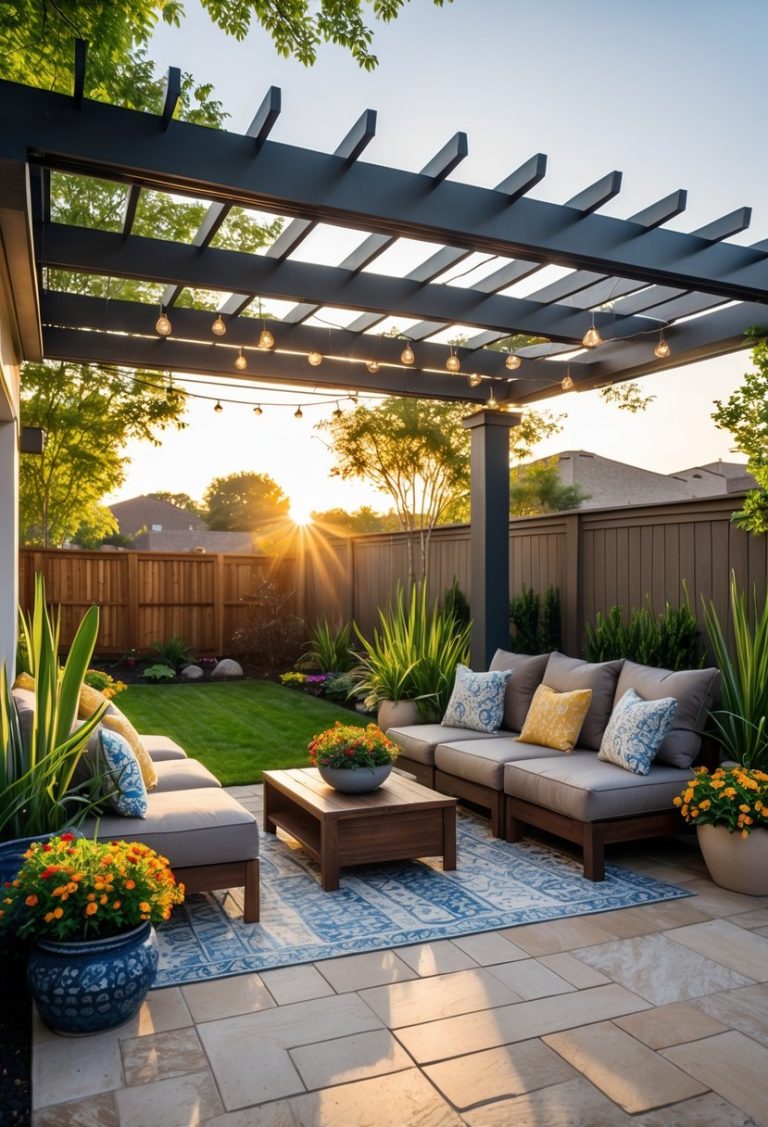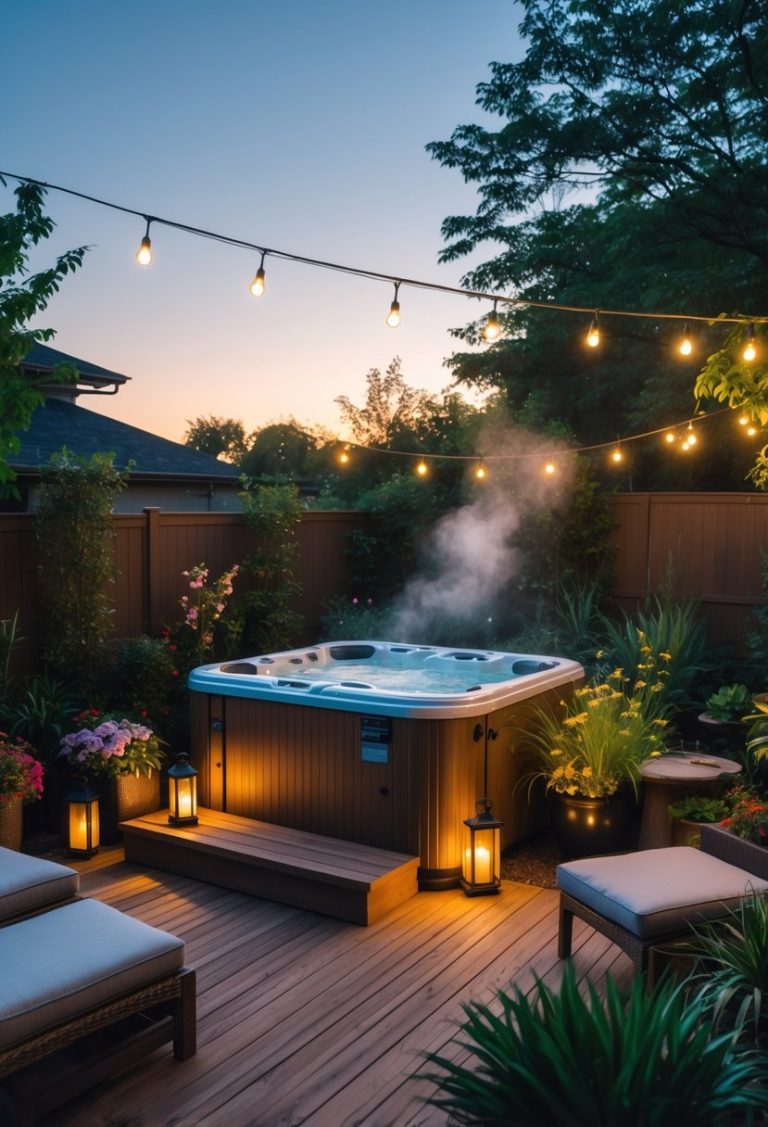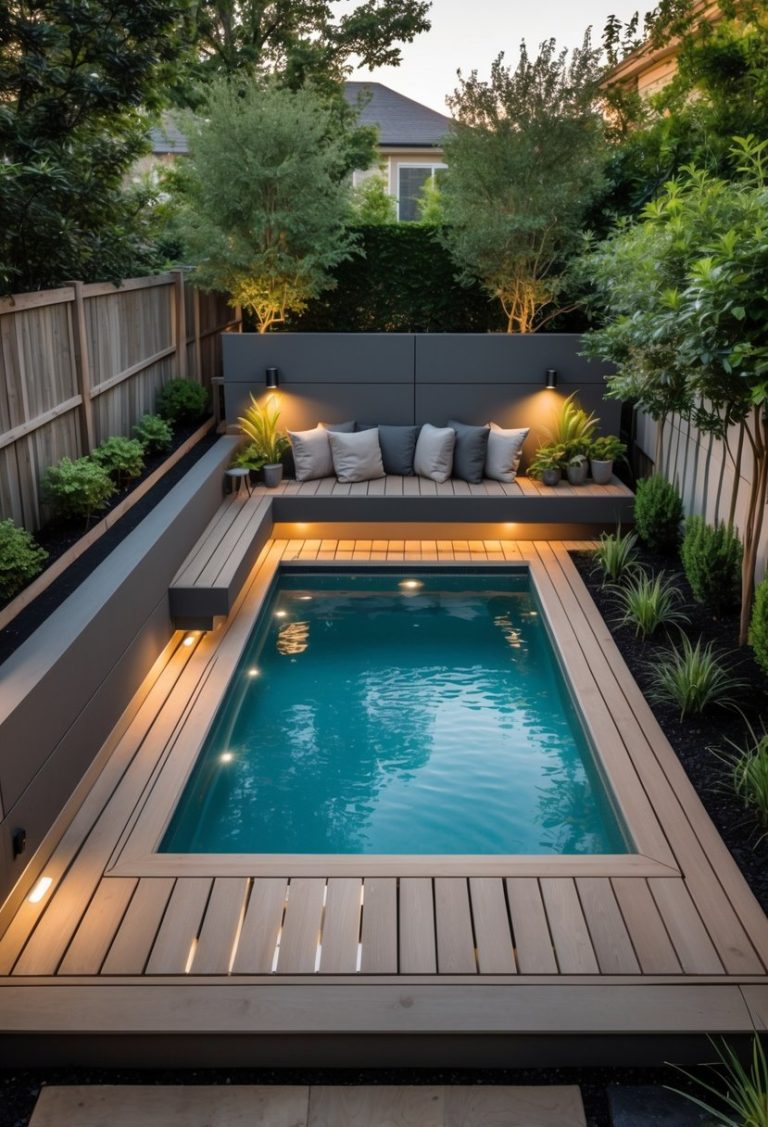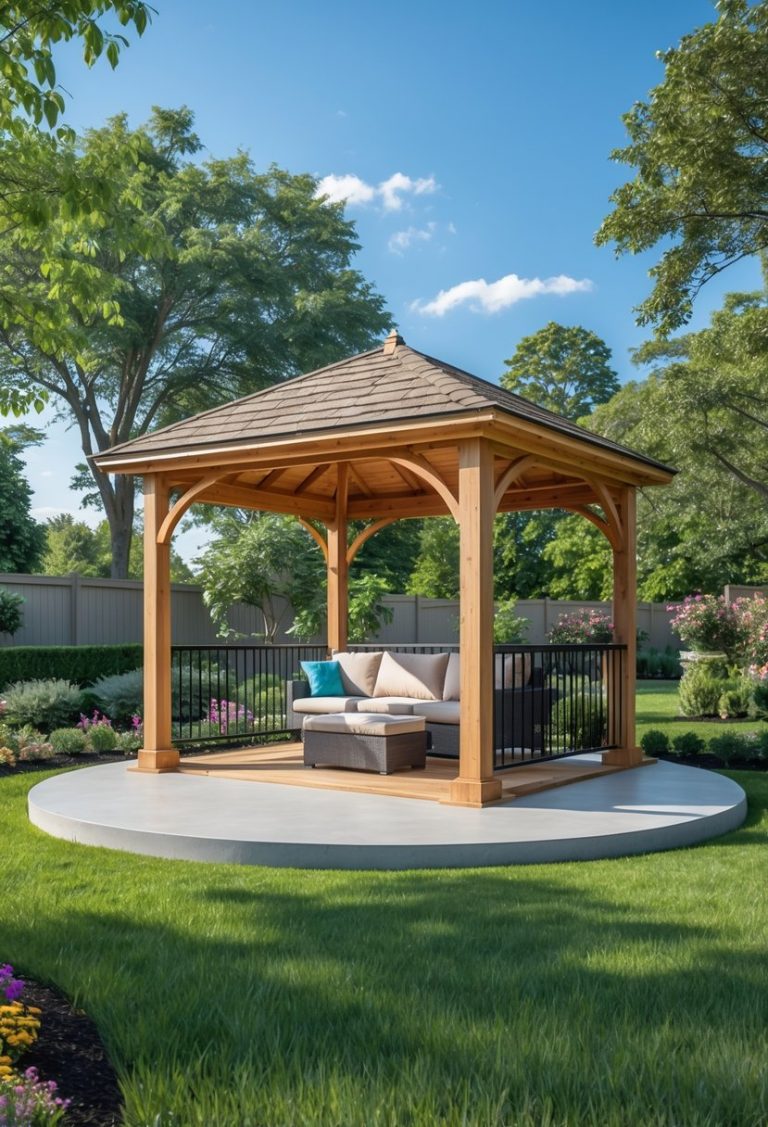Firepits Backyard Ideas: 7 Stunning and Practical Designs for Your Outdoor Space
Many people want to make their backyard a comfortable place to relax and spend time with family and friends. Adding a firepit is a popular way to create a cozy and inviting outdoor space. It can be used for warmth, cooking, or simply as a focal point to gather around.

A backyard firepit can enhance outdoor living by providing a place for socializing and enjoying nature. There are many options to fit different styles, spaces, and budgets, making it easy to find a solution that works for any backyard.
1) Stone Ring Firepit with Seating Wall

A stone ring firepit creates a classic and durable fire feature. It blends well with natural outdoor settings.
Adding a seating wall around the firepit offers extra space for guests. This wall can also act as a boundary and support.
Using matching stone for both the firepit and the wall gives a unified look. This setup balances function and style in any backyard.
2) DIY Brick Firepit Using Reclaimed Bricks

They can use leftover or reclaimed bricks to build a simple, low-cost firepit. The bricks should be stacked in a ring, about three bricks high, with seams staggered for stability. It is important to place the firepit at least 10 feet away from structures to follow safety guidelines. Red bricks work well if fires are kept moderate in size.
3) Concrete Tree Ring Firepit

Concrete tree rings are a budget-friendly option for backyard firepits. They can be stacked to create a sturdy, simple firepit shape. Adding small stones or pebbles between rings helps improve stability and appearance.
The rings come in different sizes, usually 14 to 24 inches in diameter. They are easy to find at garden stores or online. This method requires minimal tools and skills.
4) Metal Fire Bowl for Modern Backyards

A metal fire bowl offers a sleek and simple look for modern backyard spaces. It often features smooth curves and clean lines that fit well with contemporary design.
These fire bowls are usually made from steel or corten metal, which is durable and weather-resistant. They provide a safe, contained fire source, perfect for social gatherings.
5) Built-In Firepit with Paver Surround
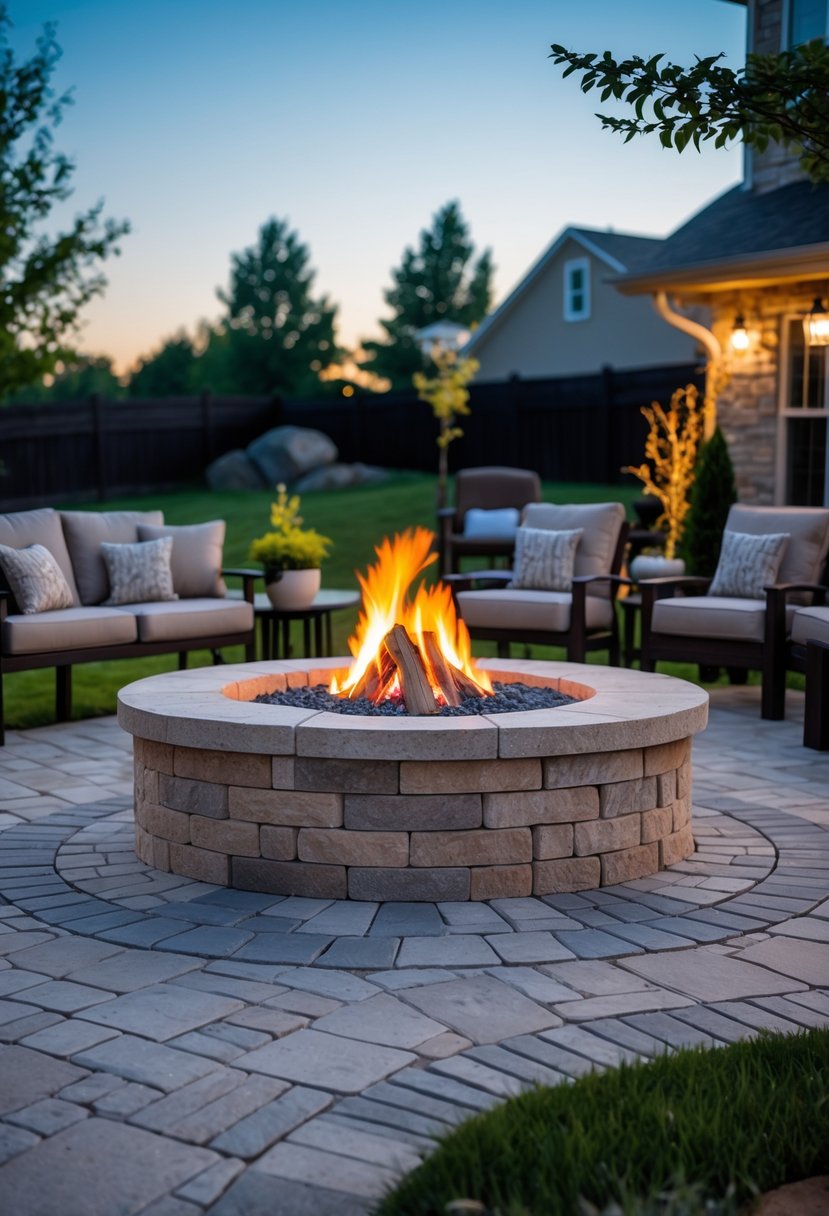
A built-in firepit with a paver surround offers a clean and sturdy look. Pavers create a defined edge that helps contain the fire safely.
This design fits well in many backyard styles and adds a permanent feature. It usually requires some effort to install but lasts for years with little maintenance.
6) Stacked Stone Firepit with Fire Glass

A stacked stone firepit offers a natural, durable look that fits many backyard styles. It uses flat stones carefully piled to create a solid, attractive wall.
Fire glass adds a modern touch. It reflects light and helps spread heat evenly. This combination is both functional and visually appealing.
7) Portable Steel Firepit for Easy Setup

A portable steel firepit offers a simple way to enjoy a fire anywhere in the backyard. It usually has a metal mesh screen to stop sparks from flying.
The steel body is often coated with heat-resistant paint to prevent rust. A sturdy base lifts it off the ground for safety and stability. This type is easy to move and set up quickly.
Key Considerations for Backyard Firepit Designs

Designing a backyard firepit requires careful thought about rules, safety, and materials. The right decisions ensure the firepit is both enjoyable and safe for everyone. Attention to these details helps prevent risks and creates a lasting, functional feature.
Local Regulations and Safety Standards
Before building a firepit, it is important to check local laws and safety rules. Many cities and towns have limits on firepit size, distance from structures, and open flame types.
Permits may be required, especially for permanent or large firepits. Fire codes often specify a minimum distance—usually 10 to 25 feet—from buildings, fences, or flammable plants.
Neighbors’ concerns should also be considered to avoid smoke or fire hazards. Following safety standards reduces the risk of fines and ensures the firepit can be used without trouble.
Choosing the Right Location
The firepit should be placed in a flat, clear area away from low-hanging branches, dry grass, and buildings. Level ground helps keep the firepit stable and safe.
Ideal spots include open areas at least 15 feet from any structure or tree. Wind direction matters; placing the firepit where smoke won’t blow toward seating or neighbors improves comfort.
Seating arrangements should allow enough space around the firepit for safe movement. Avoid locations near play areas or paths to reduce the chance of accidents.
Selecting Firepit Materials
Materials impact both safety and style. Non-combustible materials like stone, brick, or concrete are best for firepit construction.
Metal fire rings or bowls offer durability but must be paired with a fire-resistant base. Wood is not recommended near the firepit, except for seating placed at a safe distance.
Heat-resistant materials reduce the chance of cracks or damage. Choosing materials to match the backyard’s design can create a cohesive look while standing up to strong heat and weather.
Enhancing Ambiance and Functionality

A backyard firepit can be much more than a source of heat. Thoughtful seating and lighting choices create comfort and style, while careful integration with landscaping boosts both beauty and use.
Incorporating Seating and Lighting
Seating should focus on comfort and arrangement. Using weather-resistant chairs or built-in benches promotes durability and ease of use. Position seating in a way that encourages conversation, usually in a circle or semi-circle around the firepit.
Lighting complements the fire’s glow and improves safety. Low-level lights around pathways or under seats add subtle brightness without overpowering the fire. String lights or lanterns can add warmth while maintaining a cozy atmosphere.
A simple checklist for seating and lighting:
- Choose durable, outdoor-rated seating
- Arrange seats for good sightlines to the fire
- Add soft, indirect lighting like string lights
- Use solar or low-voltage fixtures for ease and safety
Integrating Firepits With Landscaping
Firepits work best when they blend with the landscape design. Placing a firepit on a flat, stable surface like a stone or gravel pad makes setup easier and safer.
Surrounding the firepit with native plants or low-maintenance shrubs improves the natural look. Use materials like concrete, brick, or natural stone that match the home’s exterior or garden style.
Here are key design tips:
- Select firepit materials that complement your landscape
- Use gravel or stone pads for a stable, clean base
- Add plants that are fire-resistant and fit your climate
- Incorporate side tables or firewood holders for function and style

